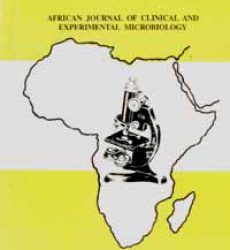Abstract
The emergence of HIV has reawakened the tuberculosis (TB) scourge and infected patients are prone to opportunistic infections, this study was carried out to determine the HIV status and etiologic agents of Lower respiratory tract infections (LRTI) among tuberculosis suspected patients in Benin City, Nigeria. The study was cross sectional. A total of 276 patients attending tuberculosis clinic were recruited. Questionnaires were filled for each patient. Blood and sputum specimens were collected in plain and sterile containers respectively and transported immediately to the laboratory. Blood samples were screened for the presence of HIV antibodies. The sputum specimens were then cultured following standard microbiological procedure, and thereafter processed using the GeneXpert MTB/RIF assay. Emergent bacterial colonies were identified and susceptibility testing was carried out following standard microbiological techniques. A total of 118 (42.8%) non-mycobacterial bacterial agents were recovered from the patients. Patients were more likely to be culture positive for LRTI in comparison with TB infection (p < 0.0001). There was no association between TB and HIV status (OR = 0.6161, 95%CI = 0.226, 1.648, p = 0.4474). HIV positive patients were more likely to be culture positive for bacterial agents and Klebsiella pneumoniae was more likely to be recovered (p = 0.0338). The fluoroquinolones, gentamicin and ceftriaxone-sulbactam were the most active antibacterial agents against bacterial isolates. The prevalence of LRTI in this study was 52.2%. The study draws attention on the need for physicians to request for bacteriological culture (non-mycobacterial) alongside the TB diagnostic algorithm in suspected TB cases.
Keywords: Tuberculosis, HIV, opportunistic infections, patients, bacteria
Download full journal in PDF below

